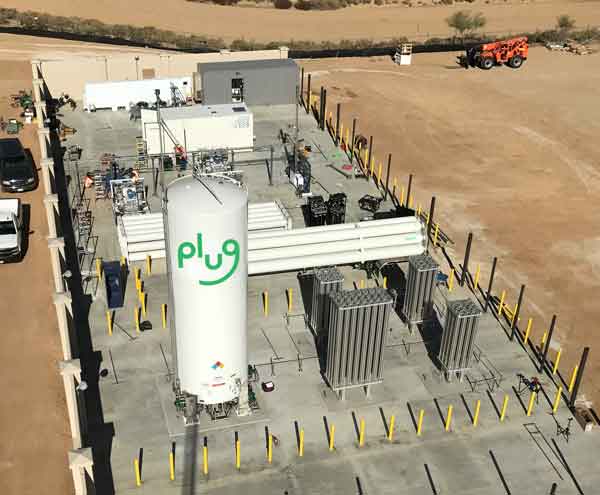New York-based Plug Power has backed away from its intention to build a 2 GW electrolyzer factory in Australia in a partnership with Fortescue Future Industries.
The companies had signed a letter of intent in 2021 for a JV to produce large-scale PEM electrolyzers in Queensland, with the ability to expand into fuel cell systems and other hydrogen refueling and storage equipment.
Plug has decided not to pursue the factory after an evaluation of the project’s economics, CEO Andy Marsh said on a call with investors yesterday. But the company still plans to sell around 250 MW of electrolyzers for FFI’s Australian projects, made at Plug’s factory in Rochester, N.Y.
“We decided that we didn’t want to build a factory with them because we saw the economics – we could do better,” he said. “We really didn’t think that was worthwhile to move ahead, though we’re still working with them on electrolyzers.”
At a symposium in October, Plug executives detailed delays in getting a substation permit for its 45-ton hydrogen production plant in New York, setting the project back by about 12 months. Plug also said at the time it would not pursue two 30-ton-per-day hydrogen projects it had explored, one in Canada and one in Pennsylvania.
Plug has five hydrogen plants in development or under construction in the US, and is exploring additional projects that are anticipated to start construction early this year.

Marsh also said that Plug is involved or engaged in all 33 of the hydrogen hubs that were encouraged by the US Department of Energy to submit full applications for an $8bn funding program.
Growth outlook
Plug’s top revenue lines are sales of fuel cell systems, hydrogen infrastructure, and engineered equipment, followed by sales of cryogenic equipment and fuel, according to filings.
The company had expected to grow revenues by 80% in 2022, but currently estimates revenue growth will be between 45% and 50%. The revenue underperformance reflects some larger projects being completed in 2023 instead of 2022 due to customer timing and supply chain issues, with 4Q22 revenues impacted by delays in new product launches, according to a presentation.
“We didn’t lose any backlog, we didn’t lose any deals. The business keeps on growing,” Marsh said.
For electrolyzers, Plug has a near-term pipeline of 2 GW, with a “sales funnel” of over $30bn. The company has orders to deliver 34 of its self-contained 5 MW electrolyzer systems in 2023, with half of those orders received in the last 60 days, Marsh said.
“I think you’re beginning to see some of the power of the [Inflation Reduction Act],” he said. “Our goal there is: How to fabricate faster.”
Marsh touted the business opportunity stemming from Plug’s stationary fuel cell power generator, which last year was demonstrated in partnership with Microsoft. Between back-up power, green EV charging, and prime power, Plug estimates the total addressable market to be over $2 trillion.
The stationary generator uses 1.4 tons of hydrogen per day. “I think folks can do the math,” March said. “That’s a huge, huge revenue stream. And when I look at this product, [the hydrogen use] is as important if not more important than the margin we make on the product.”






